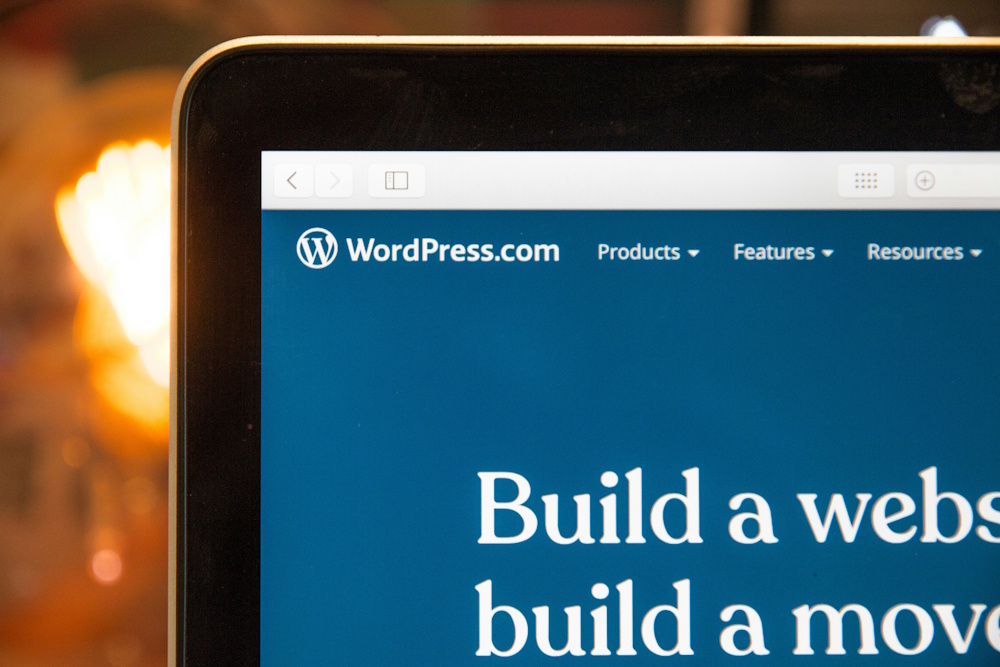Beyond Compliance: How Web Accessibility ROI Drives Real Business Growth
Web accessibility has generally always been just another compliance requirement to keep legal teams happy. However, the organizations seeing the biggest wins know something different: accessibility isn’t just about avoiding lawsuits.
It’s a measurable growth strategy that has the potential to expand your audience, strengthen your brand, and improve conversions across every digital touchpoint.
In a competitive market where every customer interaction counts, the ROI of web accessibility is no longer theoretical. Businesses are seeing real increases in engagement, reduced operating costs, and stronger customer loyalty simply by making their websites easier for everyone to use.
And the best part? These gains don’t require you to understand code or WCAG standards. They come from smart decisions that improve the user experience for all.
Accessibility: Not Just a ‘Nice to Have’
Did you know that the global market of people with disabilities, along with their families and networks, represents more than $18 trillion in spending power?
Or, to put it closer to home, in just North America and Europe, the disposable income controlled by consumers with disabilities alone is over $2.6 trillion.
Even with disability market size in mind, too many decision-makers still view accessibility as simply a compliance cost or a legal risk to be mitigated rather than an opportunity to drive growth. The mindset is often: “Let’s fix this so we don’t get fined,” rather than “Let’s invest here because it will help our business win.”
This guide will demonstrate that web accessibility might be about avoiding risk, but it’s also one of the highest-ROI investments your business can make.
The “R”: Unpacking the 3 Tiers of Web Accessibility Returns
Web accessibility delivers in more than one way and can drive ROI across multiple layers of your organization.
Tier 1: Direct Revenue & Market Expansion (The Offensive ROI)
Accessibility opens doors to markets that many organizations unintentionally exclude.
People with disabilities control a massive amount of global disposable income and represent a huge opportunity for businesses that prioritize inclusive digital experiences. When your website is accessible, you stop leaving money on the table and start converting customers that competitors may be ignoring.
For example, Forrester Research discovered that investing just $1 in accessibility yielded up to $100 in benefits.
Increased conversion rates
Brands that improve accessibility often see measurable gains in conversions.
For example, when Tesco enhanced accessibility on its grocery platform, it reported millions in additional revenue from users who could now shop independently. Similarly, Legal & General saw usability improvements that boosted its conversion rates after implementing accessible design.
Improved customer loyalty
Customers with disabilities form one of the most loyal consumer bases. When they find a site they can use successfully, they stick with it. Accessibility builds trust, reduces frustration, and encourages long-term retention from a community that actively shares positive experiences within its networks.
Tier 2: Cost Savings & Risk Mitigation (The Defensive ROI)
Beyond revenue, accessibility can prevent costly legal, operational, and technical problems.
Avoiding the high cost of non-compliance
Web accessibility lawsuits continue to rise globally, and settlements are far from cheap.
- In the U.S., ADA digital accessibility lawsuits frequently settle between $10,000 and $50,000, with some exceeding $100,000 once remediation and legal fees are included.
- Under the AODA in Canada, penalties can reach up to $100,000 per day for corporations.
- The EU Accessibility Act (EAA) coming into full effect in 2025 also adds new compliance pressure for international organizations.
So, as you can imagine, a proactive accessibility strategy is significantly cheaper than reactive crisis management.
Reducing customer support costs
Accessible and well-structured websites reduce friction, which means fewer support tickets and fewer “I can’t find this” phone calls. Self-service becomes easier, freeing support teams to focus on higher-value interactions instead of basic navigation issues.
Lowering development and maintenance expenses
Clean, semantic, accessibility-friendly code is easier to maintain, easier to update, and less likely to break as you grow. Companies that adopt accessible design patterns upfront consistently report lower long-term dev costs than those constantly retrofitting fixes.

Tier 3: Brand & Strategic Value (The Intangible ROI)
Some of accessibility’s most powerful benefits aren’t measured on a balance sheet, but they directly influence competitive advantage.
The Curb-Cut Effect
Solutions built for accessibility often improve experiences for everyone.
For example, captions help users who are deaf or hard of hearing, but also commuters in loud spaces, office workers who mute videos, or anyone watching content in a quiet environment.
And if we look at better color contrast, it helps users with low vision, but also improves readability on mobile screens in sunlight.
SEO & accessibility overlap
Search engines reward accessible practices, which means they mutually reinforce one another.
Semantic HTML, alt text, proper heading structure, transcripts, and fast page performance all improve accessibility and, in turn, organic rankings. In fact, one of our latest studies showed that organic traffic increased by an average of 23% across the websites analyzed.
Even CNET saw the positive effects of something as simple as adding transcripts to their video. The result? A 30% increase in Google search traffic.
Stronger brand reputation & CSR impact
Inclusive design strengthens brand trust and signals an authentic commitment to Corporate Social Responsibility.
Consumers are increasingly value-driven, and brands that champion accessibility stand out as ethical, empathetic, and future-ready, which drives goodwill that competitors can’t easily replicate.

The “I”: Understanding the Investment in Accessibility
To understand the true ROI of web accessibility, you also need clarity on the investment side. What does it actually cost to build and maintain an inclusive digital experience?
Initial Investment Costs
Accessibility audits
Most organizations start with an audit to understand the current state of their website or product.
Automated scans provide a fast, high-level overview of common issues, while manual testing uncovers deeper barriers that automation can’t detect. Combined, these provide a roadmap for prioritizing fixes based on real user impact.
Costs for these audits vary and mainly depend on the type of automated functionality you’re looking for in a tool, as well as the size of your site when it comes to manual audits.
Remediation
Once issues are identified, the next investment is remediation.
This may involve updating code, improving color contrast, reworking navigation, rewriting content for clarity, or implementing proper semantic structure.
While the level of effort varies based on the size and complexity of your website, remediation is often far more cost-effective when paired with design system updates that prevent future issues.
Purchasing accessible tools or platforms
Some businesses choose to upgrade or replace existing systems to better support accessibility.
This could include adopting an accessible CMS theme, upgrading to platforms with stronger built-in accessibility capabilities, or investing in tools that streamline testing and compliance.
These purchases typically complement, but won’t replace, manual best practices.

Ongoing Investment Costs
Team training and education
Accessibility is a long-term project and not a one-time fix.
That means equipping your designers, developers, product teams, and content creators with the knowledge to bake inclusion into everyday work. Regular training ensures accessibility remains a shared responsibility, and not a specialized silo.
Integrating accessibility into workflows (“shifting left”)
Embedding accessibility early in design and development saves time and reduces rework. By incorporating accessibility checks into your wireframing, prototyping, and QA testing, teams can prevent issues from being introduced in the first place, which lowers long-term costs and speeds up delivery cycles.
Regular monitoring and maintenance
Websites evolve, and so do accessibility standards.
Ongoing monitoring helps teams catch regressions, maintain compliance, and respond to new technologies or guidelines. This includes periodic audits, user feedback reviews, and updates that keep interfaces intuitive and inclusive as your organization scales.
Calculating Web Accessibility ROI (A Simple Framework)
You don’t need to be a developer or data analyst to understand digital accessibility ROI. With a few inputs that are all directly tied to your business goals, you can build a clear, defensible financial case.
The formula is simple:
ROI = (Gains from Accessibility – Cost of Investment) / Cost of Investment x 100
This framework helps you estimate how quickly accessibility can pay for itself and where the biggest returns come from.
Step 1: Quantify Your Investment (The “I”)
Start by adding up the initial and ongoing costs required to build an inclusive digital experience. These typically include:
- Accessibility audits. This should include both automated scans and manual expert testing, which will give you the baseline of what needs fixing.
- Remediation costs. What design and development hours will be needed to implement improvements? If you update your design system at the same time, this cost becomes even more efficient.
- Training and education. Factor in the workshops, courses, or internal training that help your team build accessibility into their everyday work.
When combined, these costs represent your total “I”, which is the investment needed to create a sustainable accessibility program, and not a one-off patch.
Step 2: Project Your Returns (The “R”)
Next, identify and estimate the gains your organization will see once your accessibility improvements go live. You want to be able to show that web accessibility is worth the cost.
These typically fall into three clear buckets:
- Increased conversions from new audiences. Accessibility opens your site to millions of users who may have previously been unable to buy, sign up, or navigate. Even small gains in conversion rates can translate into substantial revenue over a year.
- Lower legal exposure and compliance risk. By taking a proactive approach to accessibility, you reduce the risk of costly ADA, AODA, or EAA complaints. Even avoiding a single lawsuit or regulatory penalty can offset your entire investment.
- Reduced customer support costs. Accessible, intuitive websites generate fewer support tickets and fewer “How do I find…?” enquiries. This reduces strain on support teams and improves customer experience.
Add these projected gains together to get your total “R”, which is the return attributed to your accessibility efforts.
Getting Started: How to Make the Business Case at Your Company
Once you understand the ROI behind accessibility, the next step is turning that insight into a clear, compelling business case your organization can act on.
Start with a Small-Scale Audit
Begin with a quick, targeted audit of a high-impact area of your website, such as your checkout flow, lead-generation form, or most-visited landing page. You don’t need a full accessibility overhaul to start building momentum. Even a small audit can reveal:
- How many users are currently blocked from taking action
- Which issues are causing the most friction
- How simple fixes could translate into conversion gains or support-cost reductions.
A small audit also gives you concrete numbers to bring into the conversation, including the number of issues found, the projected loss from inaccessible flows, and the effort required to fix them.

Present the Data, Not Just the Morality
While inclusivity is important, ROI is what moves budgets.
You’ll want to frame accessibility as a smart investment, using the figures and examples outlined earlier, such as increased conversion rates, reduced legal exposure, lowered support costs, and access to a multi-trillion-dollar global disability market.
It’s also important to translate issues into business outcomes:
- “Fixing this navigation barrier could remove friction for thousands of users each month.”
- “Resolving these errors reduces our legal exposure by X%.”
- “These improvements could boost conversion by Y% based on similar case studies.”
By focusing on measurable returns, you shift the conversation from “We should do this because it’s the right thing” to “We should do this because it drives growth, reduces risk, and strengthens our competitive position.”
Final Thoughts
Web accessibility is often misunderstood as a compliance requirement, but the data tells a different story.
When businesses invest in accessibility, they protect themselves from risk, but also unlock new markets, increase conversions, lower operating costs, and strengthen their brand in ways that directly impact the bottom line.
The organizations leading their industries today aren’t waiting for regulation to force their hand. They’re treating accessibility as an innovation opportunity.
Your path to ROI doesn’t need to be complicated. Start small. Run a focused audit. Quantify the gaps. Present the financial upside. And most importantly, frame accessibility not as a cost center, but as a long-term growth strategy with measurable returns.




